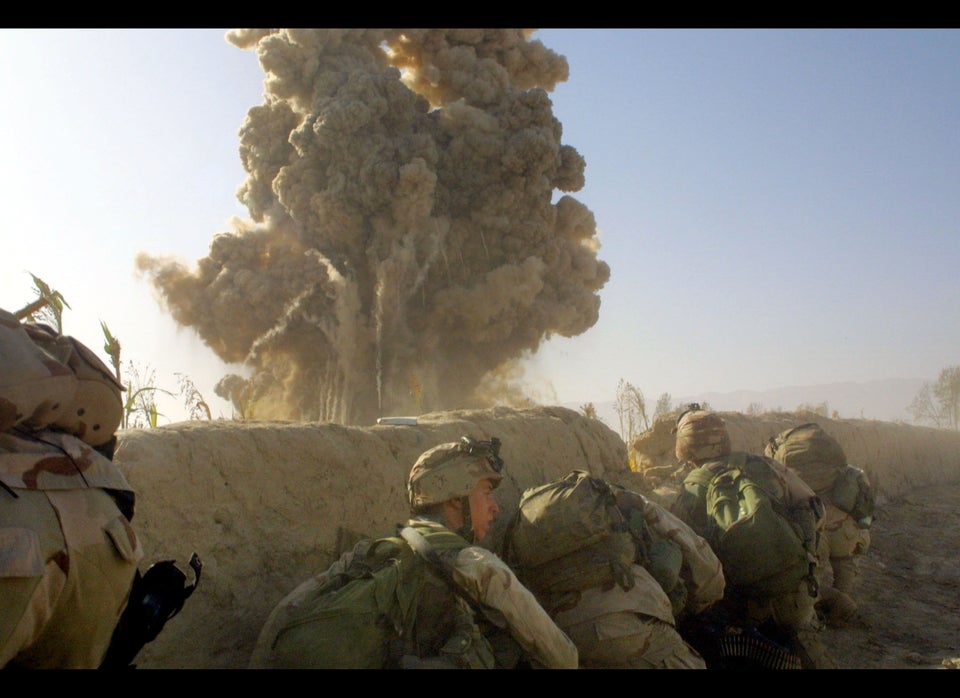
WASHINGTON -- After more than a decade and nearly $50 billion spent on building the Afghan National Security Forces, the Pentagon is still struggling to adequately train them and has lowered the standards used to assess their progress, security experts told Congress Tuesday.
At a panel of the House Armed Services Subcommittee on Oversight and Investigations on Tuesday, Anthony H. Cordesman, a defense analyst with the Center for Strategic and International Studies research institution, described the effort to train the ANSF to take over for the U.S. and its allies at the end of 2014 as fundamentally broken.
"At present, we lack any credible plan for the future development of Afghan forces," Cordesman said. The Pentagon, he added, is overlooking "key issues like corruption, political alignments and the actual ability of the ANSF to deal with insurgent threats in the field.”
It’s not a totally new development: Many observers have challenged the Pentagon’s plan to build up an independent ANSF as fumbling and riddled with insurmountable challenges. The current plan calls for the force to be about 350,000 men, but policymakers expect that will have to be drastically diminished once Western funding is reduced.
The creation of an independent ANSF remains a critical component of the Western transition plan, and many experts consider it essential to preventing chaos after most American combat troops leave at the end of 2014. After 2014, the Pentagon plans to maintain diminished U.S. forces in the war-torn country that will continue to aid and assist the Afghan security forces. Between 2002 and 2011, the Pentagon spent $43 billion to build indigenous forces in Afghanistan, and that number will continue to grow in coming years.
Rep. Jim Cooper (D-Tenn.), the top Democrat on the subcommittee, called Cordesman's assessment a "devastating critique."
"I wonder if a credible plan is even possible given the 18-month time horizon," he added.
"We've already been involved in this conflict for over 10 years,” added Cooper later in the hearing. “People's patience is running thin. Should we plan on another 10 years? Twenty years to get this working?"
Cordesman was joined on the panel by Col. Joseph Felter, a former Army commander who helped advise Afghan forces in Afghanistan; Ambassador Kenneth Moorefield, the deputy inspector general for special plans and operations at the Department of Defense; and Charles Michael Johnson Jr., an official with the Government Accountability Office, which recently published a report on the long-term challenges facing the ANSF.
Johnson suggested to lawmakers that with the transition date looming, and less progress than U.S. officials would like, there were signs the government decided to change its metrics for success in order to make the ANSF appear more capable.
"While we had previously found the tools used to assess ANSF reliable for us to report on capability, it is worth noting that the definitions have changed several times," Johnson said.
In 2011, Johnson explained, no Afghan army units achieved the highest level of “independent,” meaning that they were not capable of acting without assistance from the U.S. and NATO, according to the Pentagon rating system. The next year the Pentagon lowered the bar by eliminating that highest category.
“Now the highest level is 'independent with advisers,'” Johnson explained -- meaning they can operate only with the hands-on support of Western forces.
Commander Bill Speaks, a Pentagon spokesman, disputed this interpretation of the change, telling The Huffington Post that the levels were altered to make them "more realistic, but not less rigorous."
"The change from the 'independent' to 'independent with advisers' rating more accurately captures conditions on the ground and is both more accurate and transparent," Speaks said. "Most importantly, the standards required for an ANSF unit to attain that rating have not changed, despite the change in the name."
Even with the new rating system, the Pentagon reported in April 2012 that only 7 percent of army units and 9 percent of police units were rated at the highest level of capability.
At the hearing, Felter cautiously defended the training program, saying that if there is enough funding and time, there’s no reason to assume the program will fail -- or the government would collapse, as it did in the early 1990s after the Soviet Union stopped providing aid to Afghanistan.
“I think we should plan on using our remaining time, which has been determined by our political leadership here, to make as much progress as possible, to develop this capacity of the ANSF and allow the government to develop as much as possible,” Felter said. “I think we're leaving Afghanistan already in much better shape then the Soviets left it and we're going to make progress between now and when we leave."
Cordesman also pointed out Tuesday that some of the assessments for the ANSF may be measuring the wrong items. For instance, by focusing on the number of troops, rather than the quality of troops, Cordesman said, the government may be overestimating the force’s capability.
Of the nearly 350,000 members in the ANSF, Cordesman said, 57 percent of that total is military and the rest are police, which are far more prone to corruption and have much less training. As U.S. forces have turned over certain areas to the ANSF, there are signs that defections to the Taliban are on the rise, a problem that seems to plague police units more than the better trained army ones.
“Compared to the military, the various elements of the police are tied far closer to factional politics and local government, and have far more opportunity to take bribes, pursue personal vendettas, and abuse the population,” Cordesman said.
He added in his prepared remarks, “Measuring the ANSF’s ability to fight is not nearly as important as measuring its will to fight – and its will to fight for the central government and not some powerbroker or warlord.”
